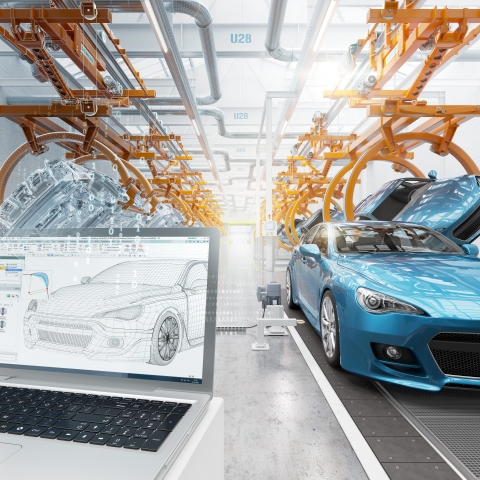Apr182016
Posted at 11:03 AM
Guest blog post by Eric Spiegel, President and CEO, Siemens USA
Tomorrow – six days before the Hannover Messe, the world’s largest industrial technology trade show – I will join leaders in manufacturing and government to tackle a critical question: Is American manufacturing heading in the right direction?
The event, “The Future of Manufacturing: Spotlight on Investment,” will be held in Washington, D.C., with Assistant Secretary of Commerce for Industry and Analysis Marcus Jadotte featured in the opening interview. You can watch the event live at 8:30 a.m. EDT at www.bloomberg.com/livestream.
When we try to answer the above question, the focus often turns to temporary trends – like energy costs – where what goes up must come down. Through this lens, manufacturing itself should follow a similar pattern, which isn’t a very hopeful view.
I’m hopeful when I look at a different set of trends. I’m hopeful when I think about how – for almost ten years now – we’ve been watching smartphones transform our consumer and retail worlds. But all this time, manufacturing software has been becoming much more sophisticated, too – and now it’s ready to revolutionize the industrial world.
Looking ten years into the future, you’re going to see all the biggest industries in the world making the leap to smart factories.
Some call this advanced manufacturing. In Germany we call it Industry 4.0. In this new type of manufacturing, trends like energy and labor costs won’t matter as much. What will matter more is innovation and software development – which really plays to U.S. strengths.
But first there are some challenges that need to be overcome, including America’s aging industrial base. The average assets and equipment in operation are more than 35 years old.
Those who tune in tomorrow will be able to learn more about how companies like United Launch Alliance and Rolls-Royce are already making the technological leap into the Fourth Industrial Revolution.
But you will also hear me offer some advice to smaller and midsized companies that want to know how to upgrade their operations and go digital. Rather than try to transform their businesses all at once, they can start by investing in new software or digital technology in a key part of the business, like Marlin Steel Wire is doing.
Marlin Steel is a nearly 50-year-old company that moved to Baltimore in the late 1990s. When I visited the factory recently with the National Association of Manufacturers, I saw how they’d begun their digital transformation by investing in a large machine tool with robots that did welding. They were using our motion controllers and software.
President Drew Greenblatt said the employees who knew how to operate the robots were very important. He said that without them there were parts of the businesses that they would be struggling to compete in today.
This is just one example of the way U.S. manufacturing can gain a lasting edge in this new industrial age, which is why it will be exciting to see American companies demonstrating their very best production, solutions and services in Germany next week at the Hannover Messe. Their global leadership, I’m sure, will be on full display, too.




